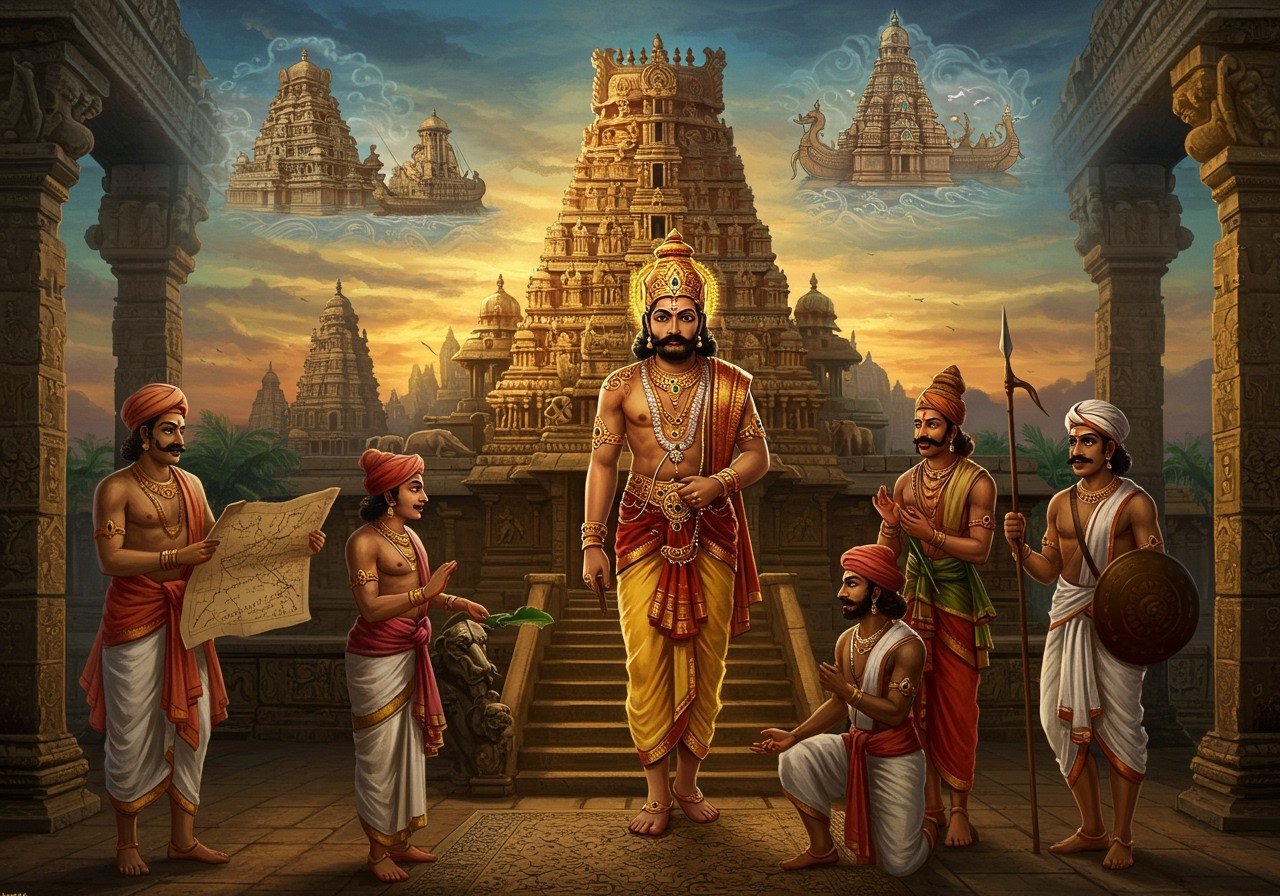
South India’s history is a vibrant tapestry woven with the threads of powerful kingdoms and dynasties. This article delves into the political landscape of this region, focusing on the period from the 3rd to the 13th century CE. Understanding this era offers valuable insights into the region’s development, cultural richness, and enduring legacy.
Early Dynamics: Pallavas, Cheras, and Early Cholas (3rd – 9th Century CE)
The early centuries of this period witnessed the rise of significant powers. The Pallavas, prominent from the 3rd to the 9th century CE, left an indelible mark with their architectural marvels, particularly the rock-cut temples of Mahabalipuram. Their contributions to art and culture significantly shaped the region’s identity. The Cheras, influential until the 12th century CE, played a vital role in fostering trade and cultural exchange. Simultaneously, the early Cholas began to lay the groundwork for their future dominance.
Dive deeper into the sacred world of South Indian temple architecture.
Rise of Regional Powers: Rashtrakutas, Chalukyas, and Later Cholas (Mid-8th – 12th Century CE)
From the middle of the 8th century, the Deccan and South India saw the rise of several powerful entities. The Rashtrakutas, Chalukyas of Kalyani, Yadavas, Kakatiyas, and the later Cholas dominated the political landscape. The Cholas, under rulers like Rajaraja Chola I and Rajendra Chola I, expanded their empire significantly, reaching the heights of their power between the 10th and 12th centuries. Their naval expeditions extended their influence to Southeast Asia, demonstrating their maritime prowess. The Brihadeeswarar Temple stands as a testament to their architectural achievements.
Later Dynasties and Shifting Power: Pandyas and Hoysalas (12th – 13th Century CE)
The 12th and 13th centuries witnessed the resurgence of the Pandyas and the emergence of the Hoysalas. The Pandyas, under rulers like Jatavarman Sundara Pandyan, focused on consolidating their power and rebuilding their kingdom. The Hoysalas, known for their intricate temple architecture, particularly in Belur and Halebidu, added another layer of cultural richness to the region. These later dynasties contributed to the complex and evolving political dynamics of South India.
Embark on a virtual spiritual journey through the Southern Char Dham.
Religion, Culture, and Politics: Intertwined Influences
Religion and culture played a significant role in shaping the political landscape. Hinduism, Jainism, and Buddhism influenced political strategies and administration. Royal patronage of temples and religious institutions enhanced legitimacy and fostered social cohesion. The Bhakti movement, with its emphasis on personal devotion, further enriched the spiritual and cultural fabric of the region. Cultural exchanges through trade and pilgrimage added to the diverse influences shaping South Indian society.
Enhance your spiritual practices with authentic Indian Sandal Incense Sticks from Poojn.in.
FAQs
What defined South Indian politics from 300-1300 AD? The rise and fall of major dynasties like the Pallavas, Cholas, Pandyas, and Hoysalas, marked by territorial expansion, architectural marvels, and cultural achievements, defined South Indian politics during this period.
Which dynasties were key players in South India during this era? The Pallavas (3rd-9th century CE), Cheras (until the 12th century CE), Cholas, Hoysalas, along with the Rashtrakutas and Chalukyas, were key players in shaping the political landscape of South India.
How did religion and culture influence politics? Religion and culture deeply influenced political strategies, administrative practices, and social cohesion through royal patronage, temple construction, and the rise of spiritual movements like Bhakti.
Poojn.in: Connecting You to South India’s Spiritual Heritage
Poojn.in, India’s leading cultural goods and services store, offers a wide range of products to support your exploration of South India’s rich spiritual heritage. Whether you are seeking authentic puja items, traditional artifacts, or resources for religious practices, Poojn.in provides a curated selection to deepen your connection with the region’s cultural legacy.
- Brass and Copper Lamps (Vilakku): Discover beautifully crafted vilakku, traditionally used in South Indian temples, to illuminate your home altar and enhance your spiritual practices. These lamps are available in various sizes and designs, crafted with meticulous detail.
- Sacred Powders (Kumkum and Vibhuti): Source authentic kumkum and vibhuti from respected temples, ensuring the purity and sanctity of your religious rituals. Poojn.in offers a variety of options to suit your needs.
- Puja Thalis: Find specially designed puja thalis tailored for South Indian worship customs. These thalis often incorporate intricate designs and auspicious symbols, creating a sacred space for your offerings.
- Bell-Metal Items: Explore a range of traditional bell-metal items used in temple rituals, adding authenticity and reverence to your practices. Poojn.in offers high-quality bell-metal items crafted by skilled artisans.
- Sandalwood Products: Enhance your religious ceremonies with handpicked sandalwood products, known for their fragrance and spiritual significance. Poojn.in offers a variety of sandalwood items, including incense sticks, paste, and carvings.
Visit Poojn.in today to explore our complete collection and enhance your spiritual journey.


